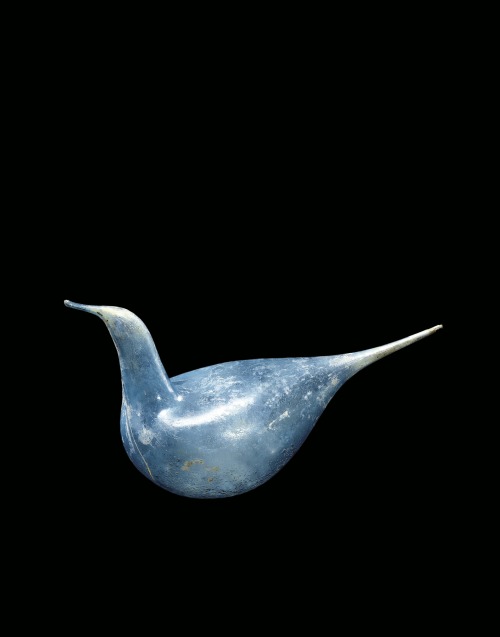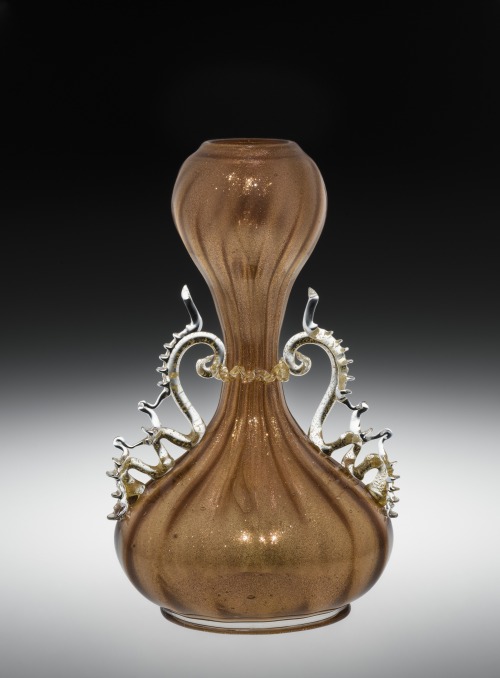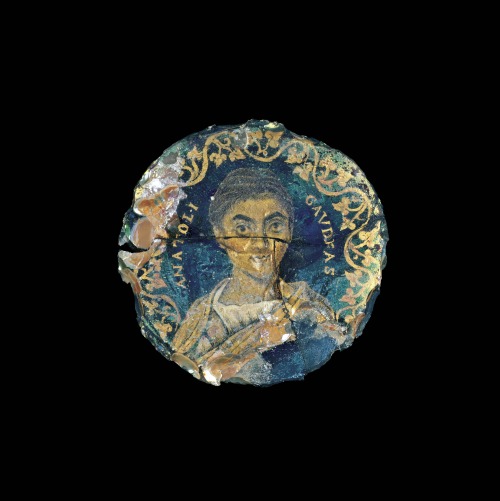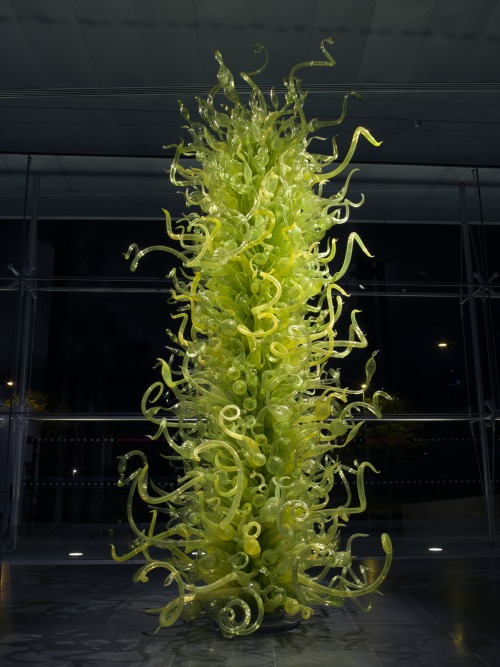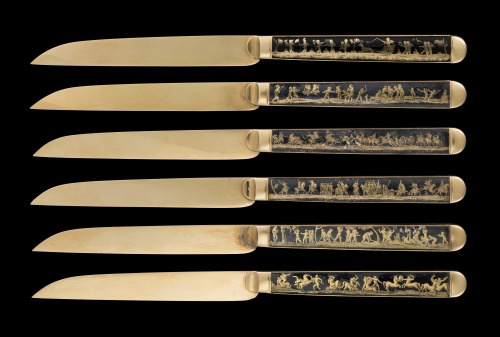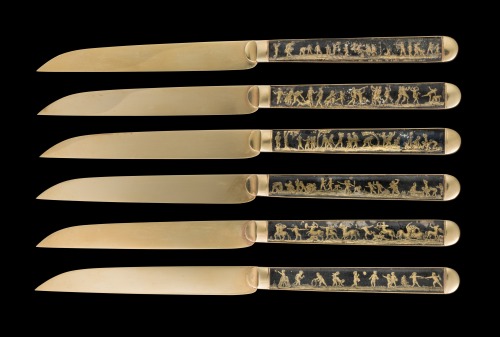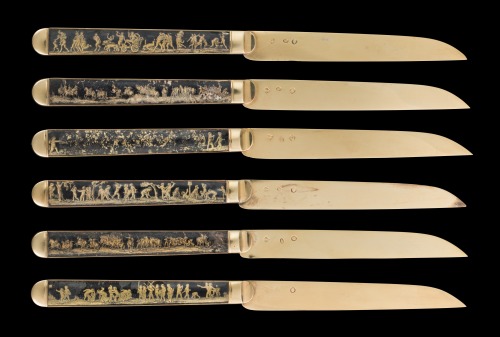#object of the week
Object of the Week: Vessel Shaped Like Bird, possibly Switzerland or Northern Italy, 25-99. 66.1.223.
This delicate glass bird once held a powdered cosmetic or liquid perfume. It was made soon after glassblowing was created and glassblowers could make more elaborate, sculptural forms. The vessel was used only once; the user snapped the end of the tail off to remove the precious contents inside the bird.
Post link
Object of the Week: Incandescent Light Bulb in Display Case, Joseph Swan (maker), London, England, about 1877. 2018.8.6.
The incandescent light bulb was not invented by a single person. One of the early makers of light bulbs was Joseph Swan, who received a patent in 1860 for a low-quality, brief-lifetime incandescent light bulb. He improved this initial design in 1875 and 1880 by fabricating a carbonized thread filament and improving the vacuum in the bulb. The early date of this bulb identifies it as one of the world’s oldest surviving examples of the light bulb.
Post link
Object of the Week: Aventurine Gourd Vase, possibly Salviati Dott (maker), possibly Compagnie di Vetri e Mosaici de Venezia e Murano (maker), Venice, Italy, about 1880. Bequest of Jean-Claude Ziegler. 2017.3.5.
This glittering gourd vase perfectly evokes the feeling of fall! It gets its unique sparkle from aventurine glass, which is made of gold, copper, or chromic oxide inclusions. The Museum will be closed tomorrow on Thanksgiving Day and will reopen on Friday, November 27.
Post link
Object of the Week: Medallion with Portrait, probably Rome, about 300 CE. Purchased in part with funds from the Clara S. Peck Endowment Fund. 90.1.3.
Only about two dozen gold-glass medallions like this one have survived. To make this emblem, the artist glued a sheet of thin gold foil to a flat piece of blue glass and scratched away the background with a stylus. Next, the glassworker heated the decorated disk to about 900 degrees F, any hotter and the gold would have burned away. Once heated, it was picked up on the end of a blown glass bubble, sandwiching the gold between two layers of glass.
Post link
This Object of the Week comes courtesy of our Teen Leadership Council. One of the Museum’s most recognized pieces, Chihuly’s Fern Green Tower, can be seen glowing in the night, welcoming every visitor. Dale Chihuly, known for his contemporary art & design, specially designed this piece consisting of 712 citron colored branches. When asked about this piece, our teens said “When I was little, I always loved looking at this piece and thinking how cool it was" and “I love the citron colors especially when it is glowing a neon color during the night.“
Fern Green Tower, Dale Chihuly, Seattle, WA, made in 1999, reconfigured in 2013. © Dale Chihuly. Gift of the Artist. 2000.4.6.
Post link
Object of the Week: Set of 24 Gold Dessert Knives with Reverse-Gilded Glass Handles, Pierre Bizos (maker), probably Antonine Rascalon (maker), possibly Martin-Guillaume Biennais (maker), Paris, France, 1805-1810. Purchased in part with funds from Dwight and Lorri Lanmon. 2018.3.1.
These knives could be used to serve and eat a slice of your favorite dessert today for National Dessert Day. The gold scenes on the glass knife handles were inspired by popular artworks of the time, including Napoleonic battle scenes.
Post link
Object of the Week: Schwarzlot, Johann Anton Carli, Rhine Palatinate, Germany, about 1675. 2010.3.143.
Schwarzlot is a sepia enamel first used to paint on stained glass and was eventually used to paint on glass vessels. Johann Anton Carli, who created this piece, is thought to have been trained as a painter of window glass and was one of the few enamelers of Schwarzlot in his region during the second half of the 17th century.
Post link
Object of the Week: Five-Draw Telescope, unknown maker, Italy, 1700-1750. 2018.8.5.
The introduction of the telescope in 1608 led to the production of many Galilean telescopes with a single-lens eyepiece, low magnification, and a narrow field of view. The development of the compound eyepiece in 1645 made it possible to use the telescope as a more effective device for astronomical and terrestrial observation. This example could be used for both types of observation: at 44 cm in length, it’s portable, and it provides magnification and a field of view convenient for observing both realms.
Post link
Object of the Week: Bottle with Snake-Thread Decoration, Cologne, Germany, 175-299. Purchased in part with funds from the Arthur Rubloff Residuary Trust. 2017.1.27.
The glassworker applied these “snake threads” to the surface of the bottle and added the crimped pattern with a tool. The Y-shaped tendrils, which appear brown, are gilded and give almost architectural structure to the more random white and blue patterns.
Post link

